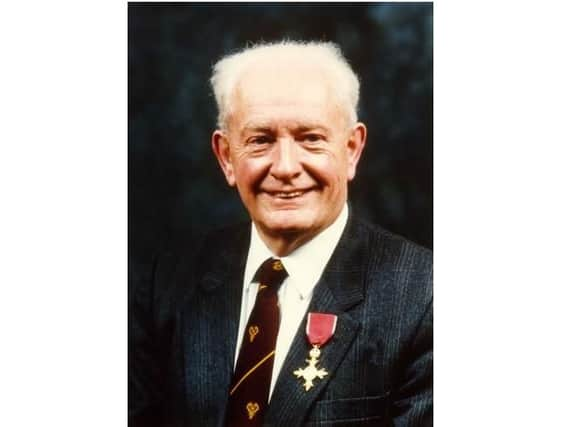Kingsthorpe-born pioneer of medical imaging to become Freeman of Northampton


Professor John Rowland Mallard OBE will be made a Hereditary Freeman of the Borough of Northampton at a Guildhall Ceremony this Saturday (October 27).
Professor Mallard was born in Kingsthorpe in 1927, to a local grocer. He attended Kingsthorpe Grove Infants and Junior School from 1932 to 1938 and won a scholarship to the Northampton Town and Country School in 1938. Professor Mallard went on to study physics at the University College Nottingham, completing his PhD on the magnetic properties of uranium in 1951.
Advertisement
Hide AdAdvertisement
Hide AdAfter a spell at the Liverpool Radium Institute, he moved to Hammersmith Hospital in 1953, to take up the post of senior physicist in the Royal Postgraduate Medical School of the University of London. He became head of department in 1957 and Reader in 1963, before moving to St Thomas’ Medical School as Reader in 1964.
Much of Professor Mallard’s early ground-breaking work took place in London. He built the first whole-body radio-isotope scanner in 1957, now on display at the London Science Museum, and also developed the first gamma camera.
On moving to Aberdeen in 1965, he gained Medical Research Council funding to begin Aberdeen’s first scanning service of the thyroid, liver and brain. At the same time, his team was developing Magnetic Resonance Imaging (MRI) technology, culminating in the first whole-body imager which entered service in 1980.
Professor Mallard retired in 1992, taking up the position of Professor Emeritus of Medical Physics at the University of Aberdeen. He was awarded an OBE in the same year and conferred as an Honorary Freeman of the City of Aberdeen which is given to persons of distinction in 2004.
Advertisement
Hide AdAdvertisement
Hide AdProfessor Mallard said: “I am so thrilled and amazed at this very great honour being given to me - the Freedom of my home town – Northampton, where I was born and grew up.
“My work would not have been possible without the wonderful support of Northampton in my early years. With Northampton Borough Education Department funding me, I was one of the very few who were able to go to university, for which I was very grateful indeed.
“I was able to go on and become a Professor and eventually to create MRI – Magnetic Resonance Imaging – which is now used all over the world for the diagnosis of disease.”
Phil Ager, Chairman of the Northampton Freemen Trustees, said: “The Trustees were delighted to be able to put forward Professor Mallard’s name for the Mayor’s consideration so that he could be conferred as a Hereditary Freeman of the Borough, as his work has pioneered such important advances in medical science.
Advertisement
Hide AdAdvertisement
Hide Ad“He has achieved so many professional honours in his long and illustrious career, and we are very proud to be able to recognise him as part of the borough’s history.”
“There are three ways that a person can become a Hereditary Freeman, these are by birth, by serving an apprenticeship in the town or by Mayor’s discretion as in the case of Professor Mallard, which allows the Trustees to recognise those Northampton born citizens that have excelled in their field or have promoted the town.”
The title of Freeman was created over 800 years ago. It gave a person, who was not a serf, the right to trade, own their own lands, vote and more importantly, protection against imprisonment or punishment without first going through the proper legal system.